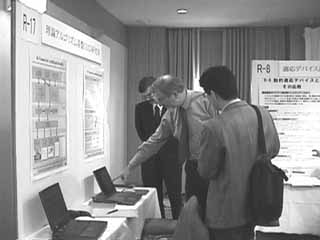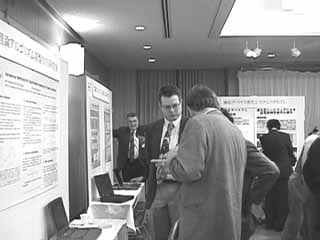Adaptive Device NEC Laboratory
http://www.rwcp.or.jp/activities/achievements/AD/nec/eng/home-e.html

The developed adaptive device integrates 6 x 63 9-bit ALUs (Arithmetic and Logic Unit) and the functions and connections of the ALUs can be freely reconfigured in accordance with the algorithm. By reconfiguring the hardware that is optimal to the algorithm, high-speed processing one order of magnitude faster than software processing by a CPU can be achieved.
The general-purpose accelerator prototype system contains two of these newly-developed adaptive devices and local memories. When this is inserted into the PCI slot of the host, it works in cooperation with the host CPU. The programming environment is composed of a mapping tools that synthesizes configuration data for the adaptive device from the application program written in C.
Theoretical Foundation GMD LAboratory
http://www.rwcp.or.jp/activities/achievements/TA/gmd/RWC-GMD/

Artificial reality is an answer to these needs. It reproduces complex real world systems on computers with such a detail not possible before. Artificial reality systems are used for simulation, but increasingly for planning and control of real world systems also. The key technology for implementing artificial reality systems are multi-agent systems with hundred thousands of virtual agents running on a network of computers. The GMD laboratory has investigated the theoretical foundations of such systems and has developed a special software called "Flip Tick Architecture" for easing the implementation of large multi-agent systems.
With this architecture the laboratory has implemented a typical artificial reality system, the traffic in cities. The system is based on a microsimulation of individual cars, buses and trucks driving on a network of roads with intersections and traffic lights. The artificial reality system will be calibrated with the traffic of the city of Bonn. The system is intended to be used for planning (e.g. scheduling of construction sites). In a next step it will be used for intelligent traffic control. This requires a data exchange between the artificial and the real system in real time.
Theoretical Foundation SNN Laboratory
http://www.rwcp.or.jp/activities/achievements/TA/snn/RWCP_snn2.html
